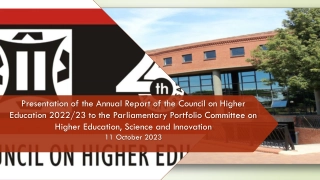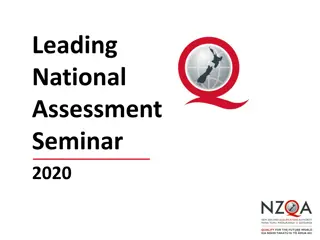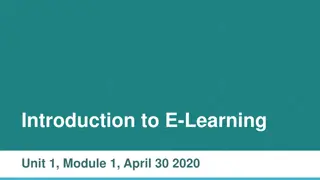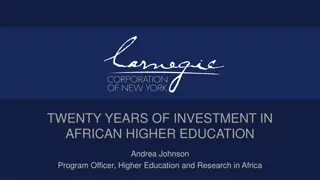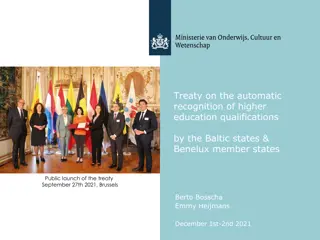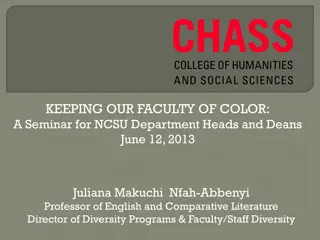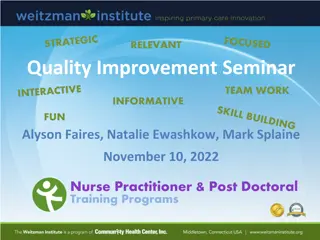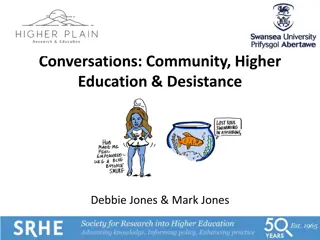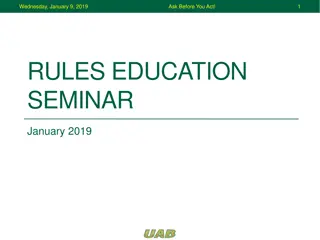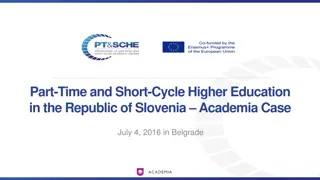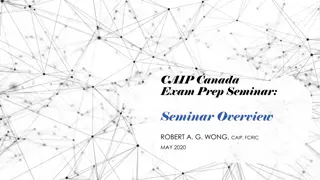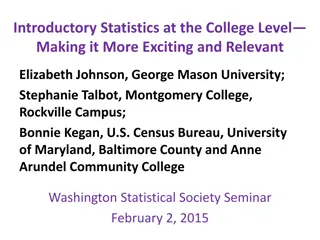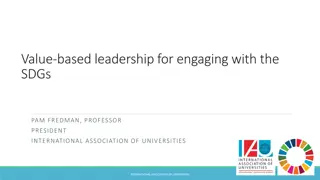Higher Education and the Common Good Seminar
This seminar explores the role of higher education in promoting common goods, emphasizing the importance of equity, social solidarity, and social mobility. It delves into the concepts of collective goods, positional competition, and the state's role in social allocation, highlighting the significance of providing equal opportunities and maximizing social mobility through education.
Download Presentation

Please find below an Image/Link to download the presentation.
The content on the website is provided AS IS for your information and personal use only. It may not be sold, licensed, or shared on other websites without obtaining consent from the author.If you encounter any issues during the download, it is possible that the publisher has removed the file from their server.
You are allowed to download the files provided on this website for personal or commercial use, subject to the condition that they are used lawfully. All files are the property of their respective owners.
The content on the website is provided AS IS for your information and personal use only. It may not be sold, licensed, or shared on other websites without obtaining consent from the author.
E N D
Presentation Transcript
Higher Education and the Common Good CGHE seminar 2 February 2017 Simon Marginson Director of the ESRC/HEFCE Centre for Global Higher Education Professor of International Higher Education UCL Institute of Education University College London, UK
Published 19 December 2016, Melbourne University Publishing https://www.mup.com.au/items/199659
Broad scope for production of public goods Non-market goods Quadrant 2: SOCIAL DEMOCRACY Quadrant 1: CIVIL SOCIETY Teaching: Free places, low value differentials Teaching: Private learning in Internet, libraries Research: Publicly funded, integral to researcher Research: Self-made scholarship and inquiry State sector goods Non-state sector goods Quadrant 4: COMMERCIAL MARKET Quadrant 3: STATE QUASI-MARKET Teaching: Commercial market in tuition/degrees Teaching: Quasi market in student places/degrees Research: State quasi- market, product formats Research: Commercial research and consultancy Market- produced goods NOTE: State, institutions and individuals are active agents in all four quadrants
Common goods Not all public goods are necessarily progressive in distribution or in their social effects (e.g. national military offensives are a public good in both the economic and political senses, but do we like them?) Common goods are a particular kind of collective political public good. These are relational goods that provide for such qualities as social solidarity, equity, human rights, democratic self-determination, and social and geographic mobility (freedom of movement) in populations The provision of higher education on the basis of equal social opportunity and maximum potential social mobility is one such common good
Higher education, the state and social allocation
Positional competition and its counter-frame
Brexit and educational level, June 2016 LEAVE REMAIN Total (same for men and women) 52 48 EXIT POLLS 18-24 years 27 73 Higher degree 36 64 First degree 43 57 Secondary education 64 36 Primary education 72 28 KINGS COLLEGE LONDON STUDY Degree holders 26 74 No qualifications 78 22
November 2016 US Presidential election: the college education factor in voting The 50 counties in the US with the highest level of college education: diverse by state, income, ethnic composition and other respects. In 48 of these counties Clinton improved on Obama s 2012 vote by an average of 9 percentage points. These districts included many counties with high proportions of white voters The 50 least educated counties in the US: Clinton s vote collapsed here, compared to Obama in 2013; she lost ground in 47 of the 50 counties, with an average slide of 11 percentage points. Again this set of counties were fairly varied among themselves except for the education factor Trump received 72% of the white non-college male vote and 62% of the white non-college female vote. Among white women voters there was a majority for Clinton only among the college educated. Clinton s problem was that two thirds of Americans are white, while only 35 per cent of Americans have achieved a college degree.
Published 19 December 2016, Melbourne University Publishing https://www.mup.com.au/items/199659


